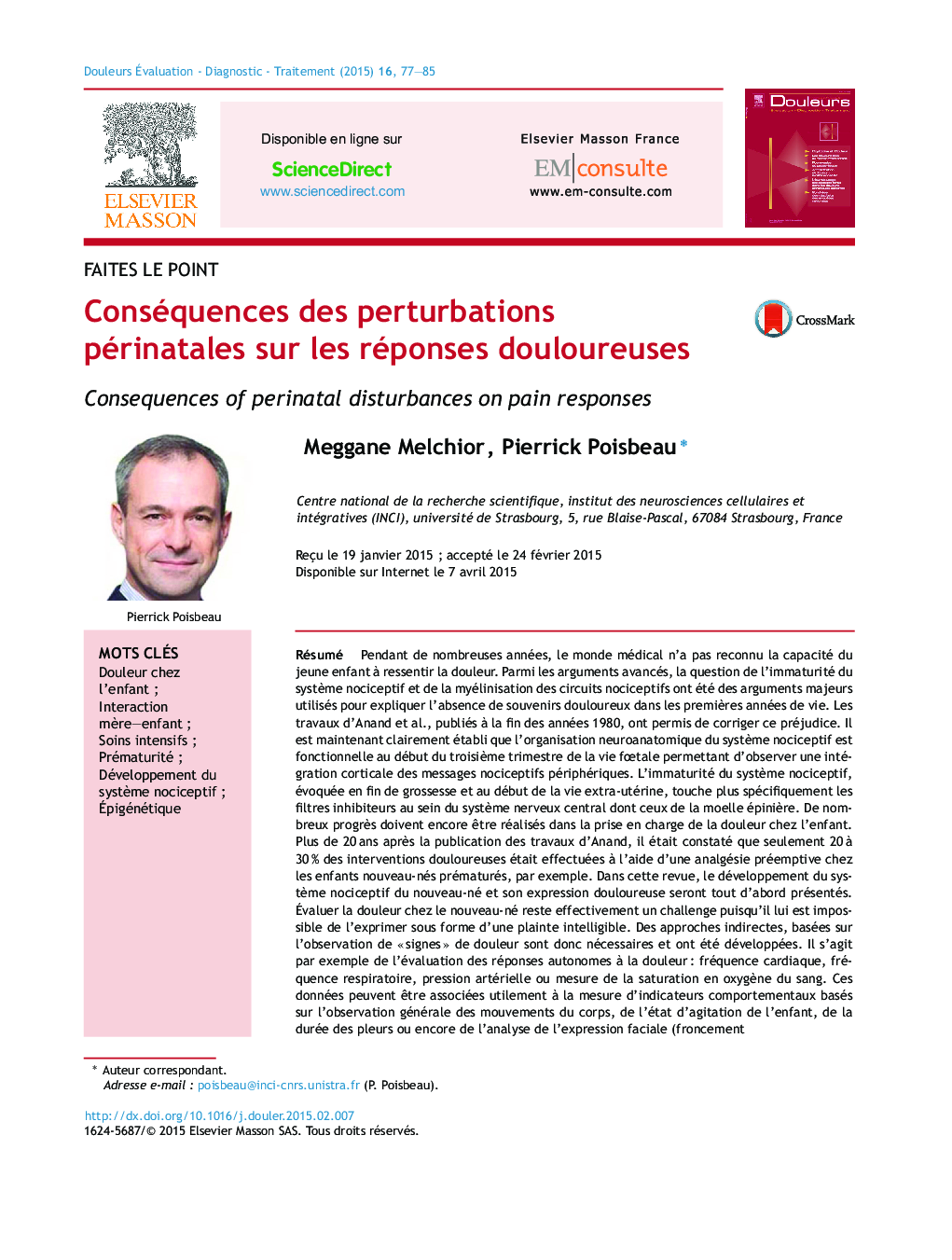| کد مقاله | کد نشریه | سال انتشار | مقاله انگلیسی | نسخه تمام متن |
|---|---|---|---|---|
| 905007 | 916905 | 2015 | 9 صفحه PDF | دانلود رایگان |
عنوان انگلیسی مقاله ISI
Conséquences des perturbations périnatales sur les réponses douloureuses
دانلود مقاله + سفارش ترجمه
دانلود مقاله ISI انگلیسی
رایگان برای ایرانیان
کلمات کلیدی
موضوعات مرتبط
علوم زیستی و بیوفناوری
علم عصب شناسی
عصب شناسی
پیش نمایش صفحه اول مقاله

چکیده انگلیسی
For several years, the medical world did not recognize the capacity of the young child to feel pain. Among the advanced arguments, the question of the immaturity of the nociceptive system and the myelination of nociceptive circuits were major arguments used to explain the absence of painful memories in the first years of life. The works of Anand et al., published in the end of the 1980s, allowed to correct this dramatic mistake. It is now clearly established that the neuroanatomical organization of the nociceptive system is functional at the beginning of the third trimester of fetal life and allows observing a cortical integration of peripheral nociceptive messages. The so-called immaturity of the nociceptive system described at the end of pregnancy and during the first weeks of extra-uterine life touches, more specifically, the inhibitory filters within the central nervous system, including those present in the spinal cord. Numerous progresses must be again realized in the child pain care. Indeed, more than 20Â years after the publication of Anand's works, it was noticed that only 20-30% of the painful interventions were made by means of a preemptive analgesia on premature newborn children. In the first part of this review, the development of the nociceptive system of the newborn child and his painful expression will be described. To evaluate pain in newborn child stays actually a challenge. Indirect approaches, based on the observation of “signs” of pain are thus necessary and have been developed. This includes evaluation of the autonomous responses to pain stimulus: changes in heart rate, respiratory frequency, blood pressure or blood oxygen saturation. These data can be usefully associated with the measure of behavioral indicators such as abnormal body movements, cry duration or facial expression scores. Beyond the question of recognizing child pain, the long-term consequences of intensive neonatal care are also critical. Painful and non-painful perinatal disturbances (i.e. excess of sensory stimulations, deficit of mother-child interactions, etc.) seem to leave a long-term imprint within the nociceptive system. Adults with intensive neonatal care history often express a higher response to pain stimulus, inappropriate stress adaptation and a higher risk of developing chronic neuropathologies including chronic pain. Long-term consequences of neonatal pain, led(inferred) by the neonatal painful procedures or by the bad quality of the interactions mother-child, will be presented to the end of this magazine(review). The recent data of basic researches on animal models and on associated mechanisms will be also evoked.
ناشر
Database: Elsevier - ScienceDirect (ساینس دایرکت)
Journal: Douleurs : Evaluation - Diagnostic - Traitement - Volume 16, Issue 2, April 2015, Pages 77-85
Journal: Douleurs : Evaluation - Diagnostic - Traitement - Volume 16, Issue 2, April 2015, Pages 77-85
نویسندگان
Meggane Melchior, Pierrick Poisbeau,